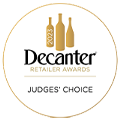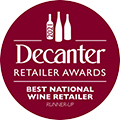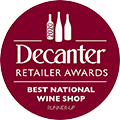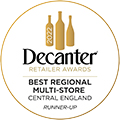To our minds, Bordeaux still produces the best value Cabernet and Merlot-based wines in the world!
Why? Because alongside the exalted Left Bank châteaux of Margaux, Pauillac, St-Julien, St-Estèphe and Pessac-Léognan and the Right Bank’s Pomerol and Saint-Emilion, there are tremendous sites and keen producers of claret in the Médoc, Haut-Médoc, Côtes de Bordeaux and AOC Bordeaux areas. We spend much time seeking them out. There has also been a noticeable change in winemaking styles over the past few years as many of the very late-harvested, heavily extracted and oaked wines are giving way to what we see as more balanced, fresher styles with a more restrained use of oak. It’s also worth noting that the high prices which garner all the headlines are only achieved by a very few and that the vast majority of the many small properties struggle to pay their way.
Dry white Bordeaux – made predominantly from Sémillon and Sauvignon Blanc –is somewhat overlooked but in Pessac-Léognan and Graves, there are oak-aged wines of great complexity. The glorious sweet wines of Sauternes and Barsac are the result of tiny yields, a lot of work in the vineyard and a reliance on nature so it can be very difficult for producers with a declining market for sweet wines. Many are looking at producing increasing amounts of dry whites.
Claret
Bordeaux & Côtes
Tanners Claret, sourced from the Entre-Deux-Mers region is blended to make a good, early-drinking wine but in a ‘classic’ claret style. Tour de Luchey, Malbat and Moulin de Mallet are great for drinking young to enjoy the supple fruit while the Sichel family’s Argadens is a more serious wine. The right bank ‘Côtes’ areas of Fronsac, Francs and Castillon all produce superbly concentrated and supple wines.
Médoc & Left Bank
The classic area of Bordeaux, this is home to the first growths and the majority of well-known properties that make the defining style of the area. When we find a suitable parcel, we release a wine under the ‘Super Claret’ label, usually in a traditional Médoc style. Château Semonlon is situated near Margaux and makes a supple and fruity wine with minimal oak. The Barton family have built a magnificent new winery at Mauvesin which is now turning out some wines with real elegance and depth; while close to Saint-Julien, Paz Espejo at Lanessan is making wines with real style and balance. Further north our old friends at Cissac and La Tour de By are making wines which are perhaps more fruit-forward than in the past.
Haut-Médoc is the area running alongside the Gironde Estuary north of Bordeaux, covering all the vineyards until north of St-Estèphe where the Médoc appellation takes over. Most of the classed growth properties are within the individual communal appellations but some of our favourites such as Cantemerle and Belgraveare under Haut-Médoc which also covers many excellent lesser properties. Margaux is the first communal appellation on the way north from Bordeaux on the ‘Wine Route’. Its wines, characterised by elegance and pretty fruit, are generally lighter than the other communes. Our favourites include Angludet and Palmer, with Château Margaux as the epitome of the style.
In Saint-Julien,Ducru-Beaucaillou and the three Léoville estates are the leading properties but there are many others clustered around the village of Saint-Julien-Beychevelle. The Barton family at Léoville and Langoa-Barton have always made wonderful wines, very popular in this market, but others such as Gruaud-Larose, Talbot and Branaire-Ducru are also well worth following from this very consistent commune. Pauillac is perhaps the most famousof the Médoc communes containing three first growths and a host of other well-known names. The style here virtually defines Bordeaux with plenty of blackcurrant fruit and firm tannic structure.Apart from the firsts, Grand-Puy-Lacoste and Pontet Canet always produce superb quality, with Pédesclaux,Batailley and Haut-Bages-Libéral well worth looking out for.
Saint-Estèphe is the most northerly of the communes and the one which generally produces the most structured and powerful wines. Cos d’Estournel and Montrose are the two best known properties here but others such as Lafon-Rochet and Lilian Ladouys are making excellent wines. The Pessac-Léognan appellation, created in 1987, covers the top properties in the communes of Pessac and Léognan just to the south of Bordeaux, including many properties within the city boundaries. Haut Brion and Pape-Clément are foremost amongst these while Léognan has properties such as Domaine de Chevalier and Olivier.
St-Emilion & Right Bank
Here the dominant grape variety is Merlot and the wines generally have a softer and fleshier feel than on the Left Bank. The firm of J-P Moueix is perhaps the best known in the region and their generic Pomerol and St-Emilion blends continue to be benchmarks. We generally buy from two Saint-Emilion grand crus, Jonathan Maltus’ soft and juicy Château Teyssier, and the Mestreguilhem family’s more oak-influenced Château Pipeau. Both are excellent examples of their type. Château Montaiguillon makes stylish and elegant wine in Montagne St-Emilion. In another of the so-called ‘satellite’ communities, Lalande de Pomerol’s Les Hauts-Conseillants has excellent depth and concentration. Pavie-Macquin and Vieux-Château-Certan continue to be two of the most sought after names in Saint-Emilion and Pomerol respectively.
Pomerol has become possibly the most sought-after area in Bordeaux in recent years especially from those properties on the clay plateau around the church and village of Pomerol. Here, wines of great concentration and power are produced, while on the sandier soils closer to Libourne the wines are lighter while still having plenty of soft Merlot fruit. Saint-Emilion is a large appellation producing wines of differing styles, from the powerful ‘extracted’ style epitomised by Château Pavie, to the elegance of Cheval Blanc. Limestone abounds on the plateau and the Côtes around the town where most of the top properties are, but the large flat area running from the bottom of the town to the river produces many excellent wines with fruit and structure.
Rosé
The Despagne family at Naujan-et-Postiac make deliciously fresh and fruity modern-style wines.
White
Dry White Bordeaux
Graves is the area that extends south-east from Bordeaux down to Langon along the River Garonne. Pessac-Léognan has its own appellation, but there are still many excellent dry white wines made under the Graves name, Graves Supérieures for sweeter whites. Literally ‘between two seas’, in this case the tidal rivers Garonne and Dordogne, Entre-Deux-Mers is the most picturesque part of Bordeaux with rolling hills, hidden villages and with mixed agriculture rather than the monoculture of the Médoc for example. White, red and rosé is produced in this area but the appellation is for dry white wines, the reds and rosés going under Bordeaux or Bordeaux Supérieur.
Sauternes & Barsac
The mist that forms along the Cirons River creates perfect conditions for producing exceptionally fine botrytis-affected sweet wines. Barsacs are generally lighter and fresher; Sauternes is fuller in flavour, although much depends on the vintage. Properties such as Coutet, Climens and Doisy-Daëne produce some of the most delicious, complex wines you can find in Barsac, while in Sauternes Rieussec, Guiraud, Suduiraut and d’Yquem are the top names. Tanners Sauternes is always sourced from a top property and is wonderful value.
































